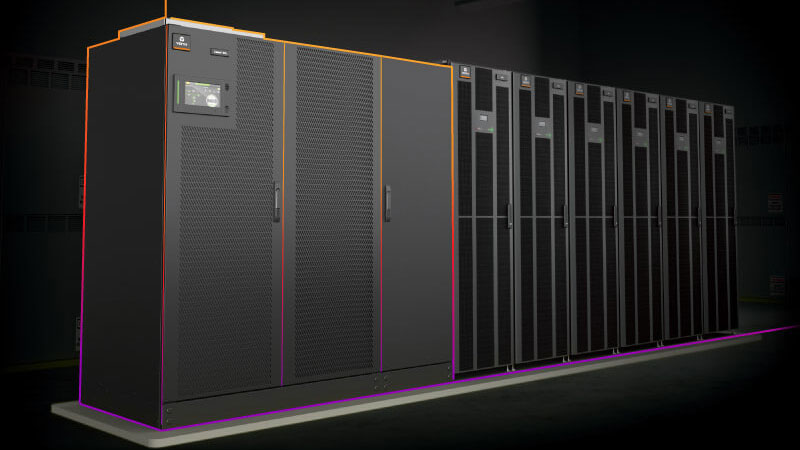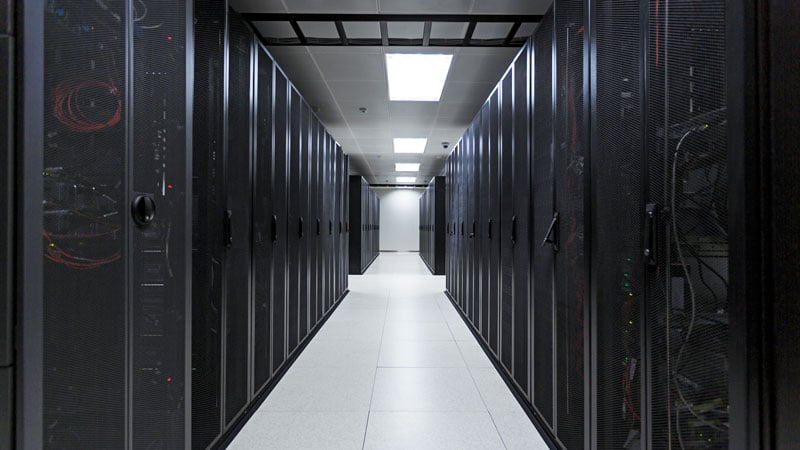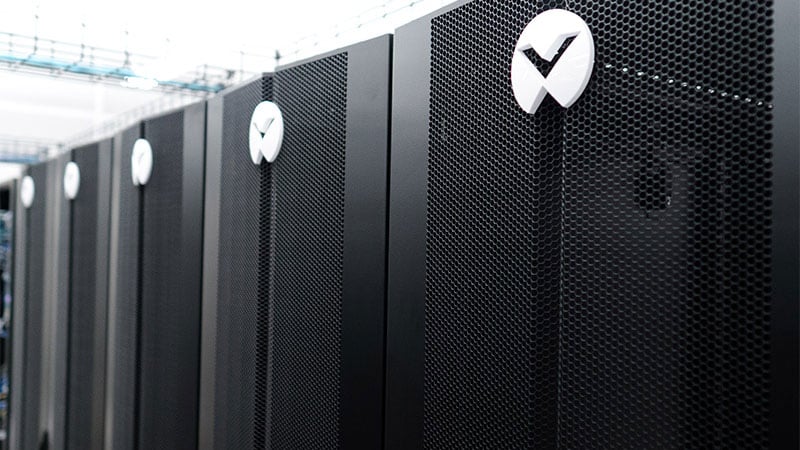Prefabricated Modular Data Centers are an Increasingly Popular Choice
Today’s networks are complex, hybrid constructs, typically with an enterprise data center at the center, ensuring seamless interactions across cloud, colocation, and edge resources. The mix constantly changes, reacting to specific capacity demands and external market forces. Datacenter builds slowed during the Covid pandemic leading to limited availability just as compute-intense applications, such as AI and machine learning, are ramping up. Supply chain issues continue to limit available capacity. This reality forces organizations to consider alternatives for meeting their urgent capacity needs, and prefabricated modular solutions are an increasingly popular choice.
Modular technologies are sophisticated, customizable, and scalable solutions to modern capacity challenges, offering factory-built reliability, rapid deployment, flexibility, and efficiency beyond the possibilities of traditional stick builds or other alternatives.
Data Center Capacity - where, when, and how much?
At the risk of stating the obvious, the colocation (colo) market is booming with approximately 5,000 colo data centers worldwide and about 1 in 5 organizations currently leasing capacity from third-party providers. The market is expected to grow at a CAGR of 6.5% through 2027, eventually reaching $136 billion by 2028.
Vast swaths of the workforce moved to remote or hybrid work arrangements during the pandemic, and many organizations adjusted their network strategies to accommodate the new model. Networks became even more decentralized and reliant on hybrid approaches leveraging cloud, colo, and edge resources as organizations reimagined the role of the traditional enterprise data center. Average screen time for adults increased 60-80% during the pandemic, video streaming surged, and a sudden rush of videoconferences taxed networks that weren’t built for such use.
For the past 20 years, colos have been a reliable solution for companies looking to add capacity quickly, mitigate latency challenges, or expand beyond their physical footprint. However, as enterprise data center operators are looking to support an increased compute load due to the advent of advanced computing technologies, such as machine learning and artificial intelligence, and added complexity –— and power and cooling needs –— the market has limited available capacity. Organizations are turning to new partners to help them quickly upgrade their facilities to support the required advanced computing and higher-density architectures.
The Modular Data Center As an Alternative
As a result of these evolving market dynamics, many organizations urgently need to add capacity. They’re growing, relying on digital applications more than ever, and in-house options aren’t sufficient. As such, they’re searching for ways to add capacity quickly, easily, and in a way that doesn’t compromise network security or the bottom line. Increasingly, the preferred alternative is prefabricated modular computing.
Prefabricated modular data centers aren't new, but the technologies and building practices have been refined considerably since their introduction about 15 years ago. These sophisticated, fully integrated IT solutions can be configured to meet specific needs and deployed quickly wherever computing is needed.
The market is taking notice. In a recent OMDIA survey of data center decision-makers, 52% said they already had deployed integrated modular solutions, and 99% said they plan to do so in the future. In fact, 93% said they plan to make prefabricated modular solutions their default construction process going forward. Any early hesitancy has long since passed as operators have found these technologies to be an easy, affordable, owned alternative to established approaches, offering several benefits over traditional data center builds.
-
Factory engineered: Because they are engineered, assembled, and tested in the factory, prefabricated solutions are rugged, reliable, and repeatable –— an important consideration when adding capacity incrementally. That reliability pays dividends over the system's lifespan, reducing the need for repairs and service calls.
-
Speed of deployment: Integrated modular solutions can be built while on-site activities continue, eliminating the wait times typical for new installations. In addition, because they are fully integrated and virtually plug-and-play, these solutions can be commissioned and operational much faster than traditional builds. These advantages can reduce the time to stand-up computing by as much as 30%.
-
Scalable: Most organizations do not grow in megawatts. With integrated modular solutions, they can add capacity as it’s needed, where it’s needed. Right sizing these additions to meet specific IT load requirements simplifies capacity planning and eliminates waste, reducing energy use, costs, and carbon footprint.
-
Customizable: Modern modules are custom-built to customer specs, then the configuration and build can be repeated quickly and efficiently as demand increases. This reduces complexity and confusion across the network and simplifies operation and service.
-
Flexible: Most facilities are built to support air cooling, but if rack densities increase –— to support advanced computing applications, for example –— traditional cooling technologies aren’t sufficient. Introducing liquid cooling technologies in these environments would require a massive infrastructure investment that is usually not feasible. Integrated modular solutions can be built and configured to support various architectures, including high-density computing and liquid cooling.
-
Sustainable: Because these are integrated, closed systems, they can be engineered to eliminate waste –— material waste, as well as consumables such as energy and water –— and be more sustainable than a traditional design. Even the delivery promotes sustainability by eliminating multiple truck rolls for each piece of equipment in favor of a single delivery for the integrated system.
-
Portable: As today’s networks become more distributed, they become less predictable. A modular solution is portable and can be relocated as network demands change –— to better support a low-latency application, for example.
-
Cost certainty: While modular solutions are not immune to external market conditions, wild fluctuations –— such as the industry is currently experiencing due to supply limitations –— are unlikely. In addition, the total cost of ownership is typically lower for integrated modular solutions than stick build or long-term leases.
Case Study:
When a UK border patrol site in Kent needed to add capacity quickly, and a stick-build data center was not possible given the time frame, the government was able to add computing capacity in just two months by turning to the VertivTM SmartModTM.
Given the sensitive nature of the data being processed, resilience was critical, as was having a local service provider with the necessary experience and track record of excellence in customer service. Physical and cyber-security were also important factors. The edge facility needed to be designed for efficiency as well, with low levels of energy waste.
The VertivTM SmartModTMprefabricated, standalone data center provides high levels of availability, energy efficiency, and control in a self-contained unit that was deployed as an add-on to the existing Kent site. The VertivTM SmartModTMis customizable to support a range of capacity needs, redundancy levels, and types of heat rejection. For this project, Vertiv deployed a system and batteries for the kilowatt per rack load specified by the customer.
The unit was configured with a hot aisle/cold aisle to operate more efficiently and was fitted with energy-efficient equipment. VertivTM Liebert® ICOMTM Controls matched the cooling to the IT load to reduce energy consumption and cost. The unit was fitted with video cameras and access-triggered alarms to address security concerns.
Two months after the order was placed, the new data center was ready to be put into operation. The system is backed by ongoing support and equipment maintenance from Vertiv, and as most components came from Vertiv, the site is serviceable by one team (addressing yet another security concern.)
This unit can also be moved to another site to support different compute requirements in the future if needed. This flexibility makes investment in a VertivTM SmartModTM unit a strategic choice for businesses with temporary sites or changing compute requirements.
Click here to read the entire case study.
Prefabricated Modular Data Centers Make Sense for Adding Capacity
The complexity of new technologies and the spreading of the network edge is driving the need for enterprise data centers to add capacity, often in unpredictable amounts, while supply chain issues are slowing the pace of data center builds. Prefabricated modular solutions offer an appealing combination of rapid deployment capabilities, scalability, reliability, customization potential, infrastructure flexibility, portability, and low total cost of ownership. For enterprise data centers looking to add compute, power, or cooling in smaller increments, modular solutions may be the best solution. Modular solutions represent a lifeline that can mitigate urgent capacity demands and facilitate lasting growth.






